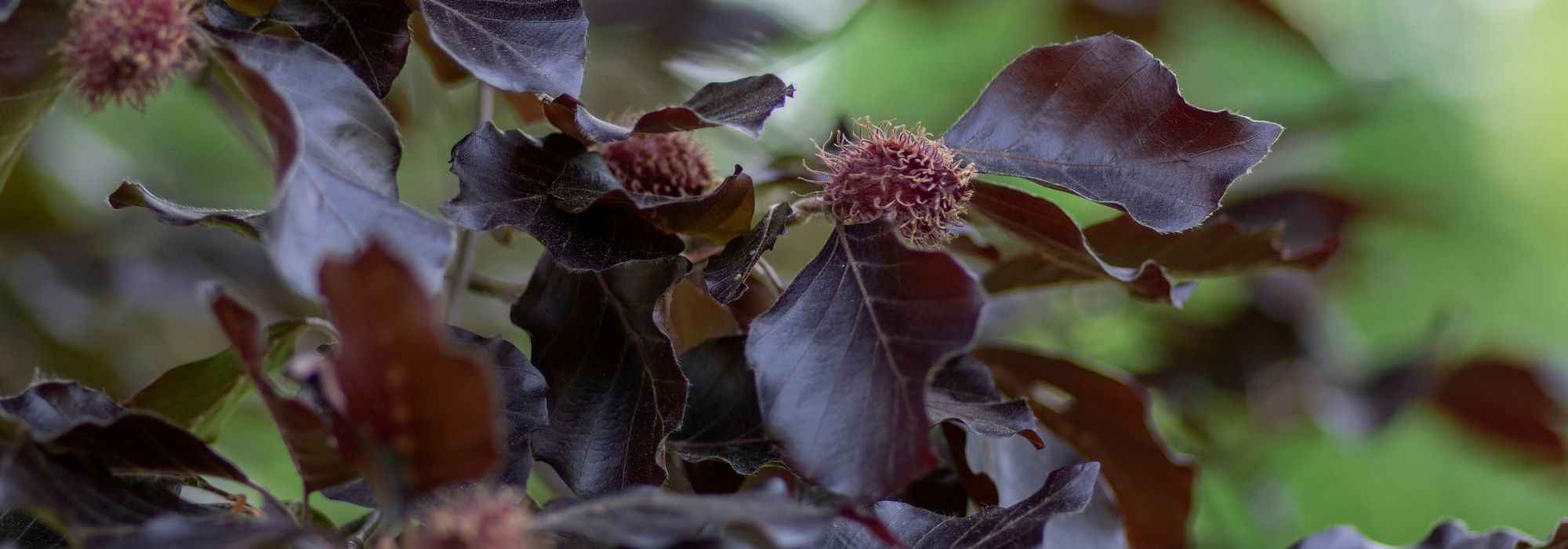
7 purple leaved trees
Our selection of dark-leaved trees
Contents
Purple trees, with foliage ranging from deep scarlet red to violet purple, and sometimes a hue bordering on black, enhance the garden with their remarkable dark silhouette. While they may appear less vibrant than others, these unique trees excel at standing out amidst the omnipresent greenery of a garden, adding a stunning splash of colour.
They can be found among deciduous species, some of which also change in autumn, accentuating this foliage characteristic, or conversely, returning to a greener leaf. These purple-leaved trees often have suggestive variety names like ‘Chocolate’, ‘Purple’, or in Latin nigra or purpurea. The beech is undoubtedly the king of purple-leaved trees, but many other trees and cultivars deserve renewed interest for their crimson crown in the garden. Some even boast subtle pink or yellow flowering, creating a magical contrast!
Here are some purple-leaved trees that I particularly recommend for planting a remarkable specimen that will add a contrasting splash of colour and rhythm to your garden!
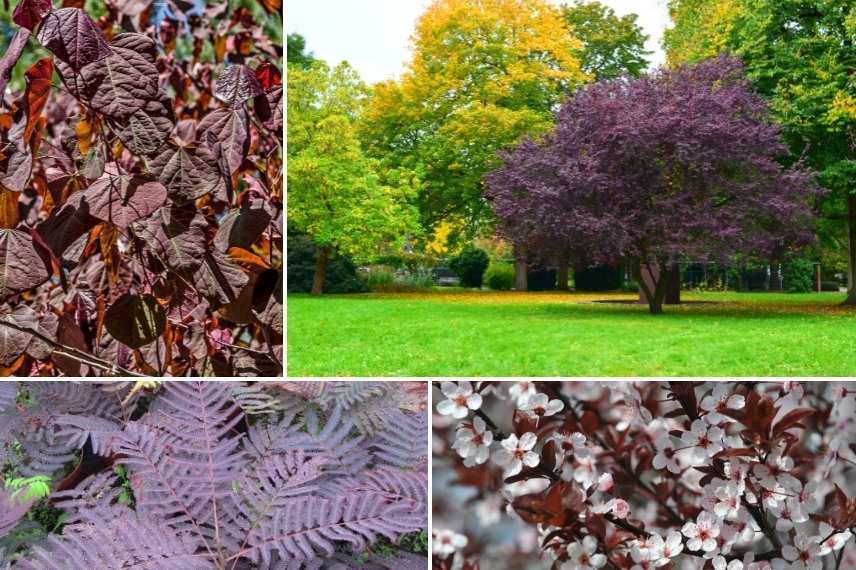
Purple-leaved trees add rhythm to the garden! They are stunning for their differently shaped leaves, and often also for their delicate flowers…
Fagus sylvatica ‘Atropurpurea’
This is the quintessential purple tree, often found in the grand parks of castles or gardens, impressing with its majestic dimensions, broad habit, and timeless appearance. The leaves of the Fagus sylvatica ‘Atropurpurea’ unfurl in spring with a very dark purple, velvety hue, then turn to a blackish purple as spring progresses, becoming glossy. In summer, bronze highlights dominate the marked veins, and the leaves eventually take on an orange-red colour in autumn. They fall quite late, as the purple beech has a marcescent quality. Due to its size (averaging 20 to 25 m tall, with a minimum spread of 10 m), it is best suited for parks and large spaces, ideally planted as a specimen tree. Its dense crown casts a deep shade. Like most purple-leaved species, it requires a particularly sunny exposure. As for the soil, it is quite accommodating, preferring cool soils.
The purple beech has diversified into dozens of varieties, more suitable for medium-sized gardens, measuring between 3 and 8 m tall. Among these interesting cultivars are: Fagus sylvatica ‘Latifolia’ and ‘Roseomarginata’. Fagus sylvatica ‘Darwick Purple’, ‘Red Obelisk’, and Fagus sylvatica ‘Pendula’ exhibit a columnar habit for the first two, and a weeping form for the latter, making them suitable for small gardens, along with the stunning Fagus sylvatica ‘Tricolor’, or variegated beech, with its striking dark pink-margined foliage.
→ Learn more with our complete guide on Beeches
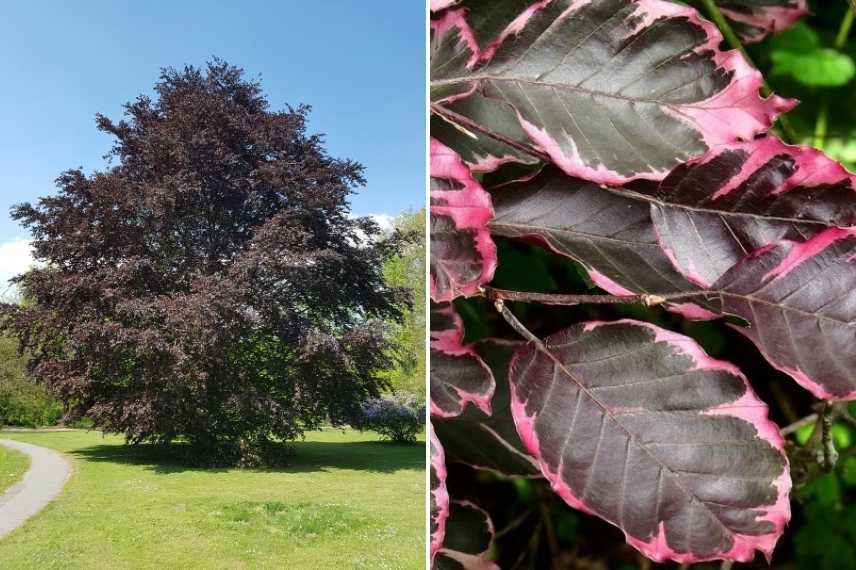
Habit of Fagus sylvatica ‘Atropurpurea’ and stunning foliage of Fagus sylvatica ‘Tricolor’
Read also
7 Stunning Purple-Leafed PerennialsCorylus avellana ‘Red Majestic’
Many purple hazels feature particularly decorative foliage, such as the classic Corylus maxima ‘Purpurea’. The twisted hazel with purple foliage, or Corylus avellana ‘Red Majestic’, not only boasts a unique appearance with its sinuous branches that give it plenty of character once the leaves have fallen in winter. However, it is primarily admired for its pendulous red aments that attract attention in February or March, and for its large, rounded leaves that are bright red at bud burst, evolving into a beautiful deep purple. Like other purple cultivars, the foliage will change during the summer to take on greener hues, which does not detract from its charm, as the colour change refreshes your garden’s palette. Very hardy and of rather slow growth, this tree reaches about 2.5 m in height with a similar spread, forming a lovely rounded silhouette. It is therefore perfect for rockeries, in large pots on a beautiful terrace, or planted as a specimen to enjoy its striking appearance in the garden! It is just less prolific in nuts than the typical species, so it is not for the fruiting aspect that you would plant it.
→ Learn more with our complete guide on hazels
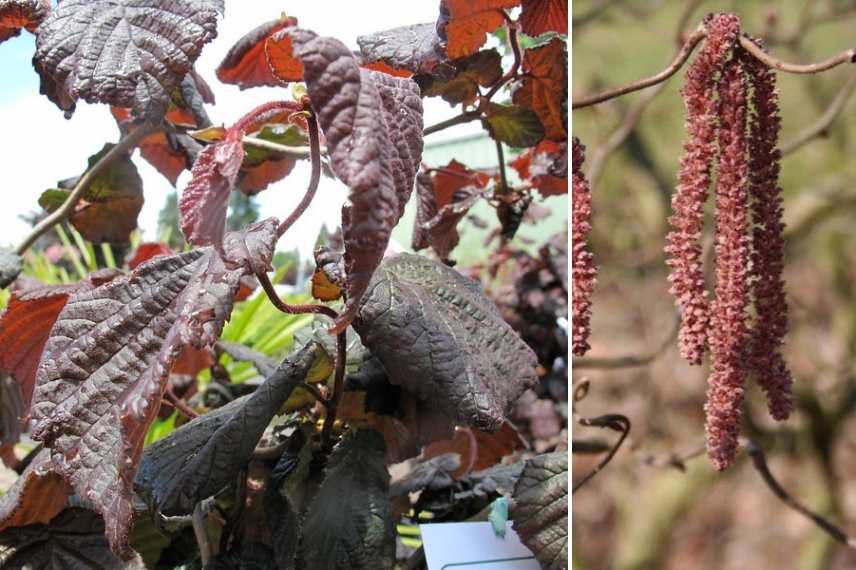
Corylus avellana ‘Red Majestic’ (© Megan Hansen), with ament in winter on the right
Discover other Trees and large shrubs
View all →Available in 0 sizes
Available in 1 sizes
Available in 1 sizes
Available in 1 sizes
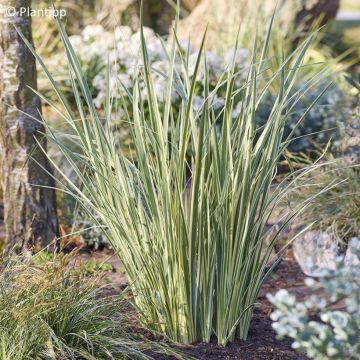
Available in 1 sizes
Available in 1 sizes
Available in 1 sizes
Available in 1 sizes
Available in 2 sizes
Available in 1 sizes
Albizia julibrissin ‘Summer Chocolate’
Impossible to overlook this incredibly elegant tree in our selection of trees with purple foliage. While Albizia, or silk tree, also known by the charming name of Constantinople acacia, has made its way into many gardens, this variety with almost black foliage remains much more obscure. Yet, it shares the same ornamental qualities as the typical species, Albizia julibrissin – spreading habit like a parasol, compound foliage light as a breeze, and absolutely delightful pink flowering in the form of small silky pom-poms – while adding this unique summer foliage colour. The deciduous foliage of the cultivar ‘Summer Chocolate’ emerges a beautiful soft green in late spring, but it turns to a bronze green and then to a very dark purple that lasts throughout summer, particularly highlighting the delicate flowers, which are much brighter than those of other Albizias, leaning towards red. It is important to note that Albizia is a slow-growing tree, and it will not reach its mature dimensions (approximately 8 m tall and 6 m wide) for about ten years. It thrives in full sun and any soil, but it is sensitive to harsh climates, so ensure it is placed in a sheltered position away from winds it does not appreciate.
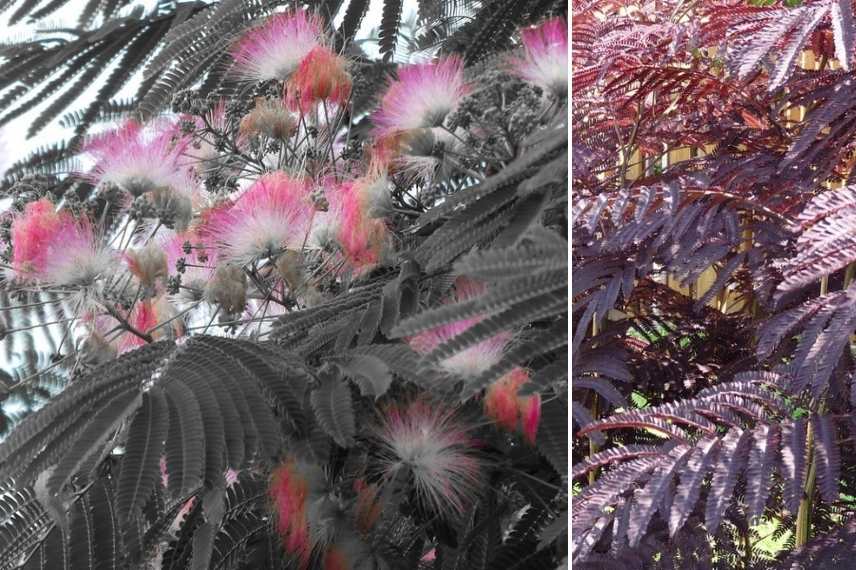
Albizia julibrissin ‘Summer Chocolate’ (© F Delventhal), with foliage reflecting the sunlight on the right (© Leonora Enking)
Read also
10 Columnar TreesAcer platanoides ‘Crimson King’
Deciduous maples are also among the trees showcasing spectacular purple foliage all year round! Of course, one immediately thinks of Japanese maples in the shrub category. However, large maples, such as the Norway maple (Acer platanoides) or sycamore maples, also excel in this rare colour for gardens. The Acer ‘Crimson King’ certainly lives up to its name; it is a king of this flattering crimson hue! Reaching about 15 m in height at ripeness with a spread of 10 m, the red Norway maple bears lobed leaves with undulating margins, resembling on a smaller scale those of a plane tree, in a very dark, glossy purple that turns orange-red in autumn. It stands out from other trees in this selection due to its yellow flowering, occurring simultaneously with the leafing: creating a stunning contrast against the emerging leaves, they are melliferous and very beneficial to bees in early spring. Hardy and thriving in sunny locations, the Acer ‘Crimson King’ grows quickly in any sufficiently drained soil. It deserves a prime spot.
The cultivar ‘Crimson Sentry’, which is also frequently encountered, will have a narrower habit, especially in its youth.
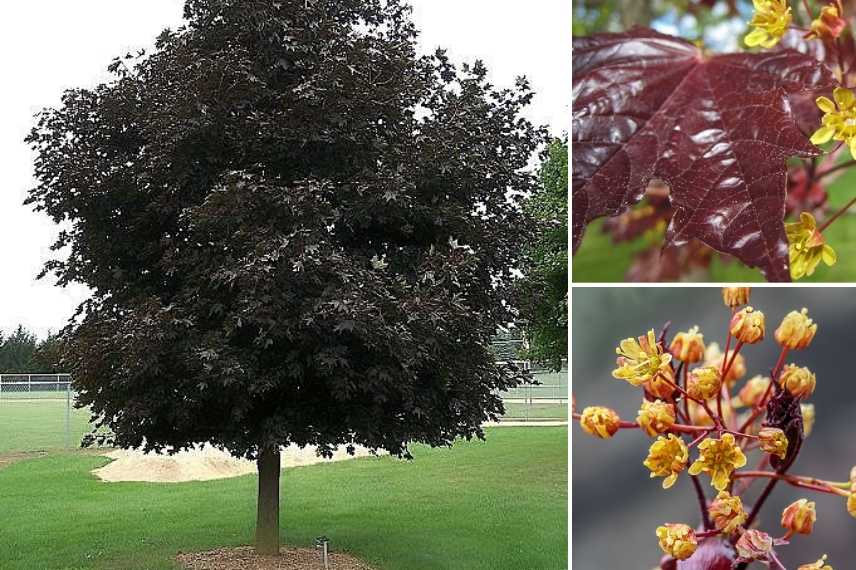
The astonishing Acer ‘Crimson King’ with almost black foliage, habit on the left (© David Stang), foliage (© HQ), and flowering (©Andy Morffew)
Cercis canadensis ‘Forest Pansy’
Here is another ornamental tree with purple leaves, smaller in size than the Albizia, that will easily find its place in many gardens. The Eastern redbud, or purple redbud, more commonly known as the Canadian redbud (although it is native to America), is a magnificent small tree revealing—unlike the Judas tree (Cercis siliquastrum)—large, bright red deciduous leaves at the bud burst period. They quickly turn a superb dark brown-red, remaining on the tree until autumn. The foliage, like its European cousin, has a lovely heart-shaped form and features flowering in short clusters on the naked wood and bark just before the bud burst period, typically in March or April depending on the region. The dark pink flowers are somewhat fewer in number and smaller than those of Cercis siliquastrum. The Cercis canadensis ‘Forest Pansy’ is a stunning tree with its spreading silhouette, often supported by two or more arching trunks, which will ultimately reach about 5 to 7 m in height, with a greater spread. It has the advantage of growing a little faster than Cercis siliquastrum. Very hardy and particularly drought-resistant, it is truly a beautiful specimen to plant in isolation in full sun or partial shade, or as the purple star within a flowerbed. It is worth noting that there is a dwarf weeping variety, ‘Ruby Falls’, which is highly appreciated for terraces!
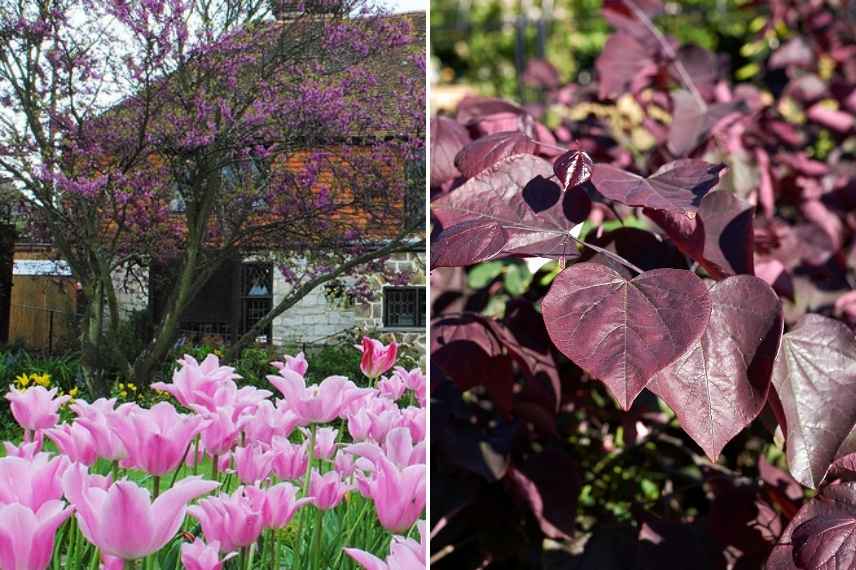
Cercis canadensis ‘Forest Pansy’ in bloom (© Almony Gardens), and its purple foliage
Prunus cerasifera 'Pissardii'
In reviewing this purple hue among trees, one cannot forget the traditional ornamental cherry, sometimes considered a bush, but capable of reaching up to 8 m in height. The Myrobalan plum certainly has a somewhat outdated appeal and was, it must be said, poorly used in the 1970s, overly planted in front of houses without being showcased. Nevertheless, it is useful due to its deciduous foliage, one of the darkest, and its charming flowering, a bright pink, one of the first to herald the beautiful days ahead (between March and April). The flowers appear before or at the same time as the leaves, creating a stunning contrast against the existing foliage. This flowering cherry is a small tree that requires no maintenance, resistant to heat, cold, and pollution… It thrives in all soils, with a preference for clay soils, particularly well-drained ones. Its spreading, rounded habit gives it a lovely appearance alongside contrasting trees or bushes, light green or bluish-green.
Prunus cerasifera ‘Nigra’ is slightly smaller, between 5 and 7 m in height with a spread of 4 m, and its leaves are even darker, a deep black, almost metallic.
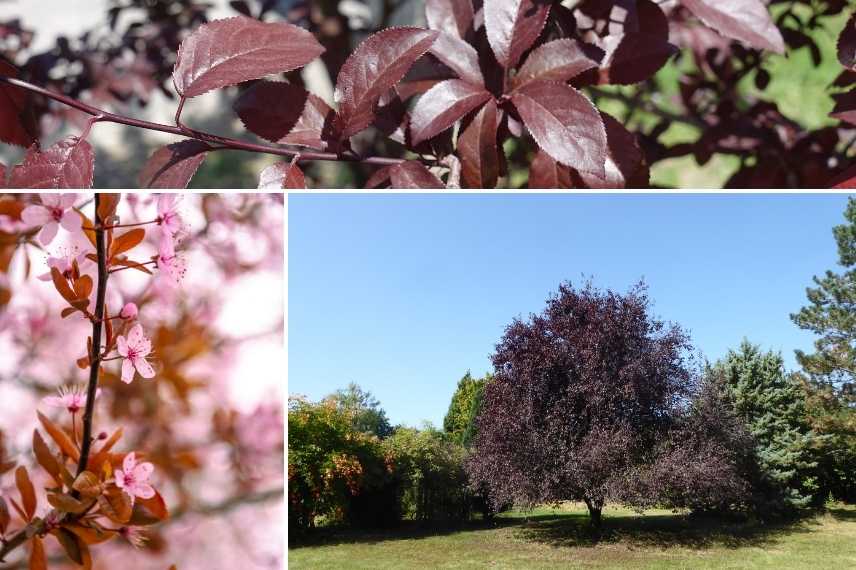
Prunus cerasifera ‘Pissardii’ (© Gwenaëlle David)
Betula pendula ‘Royal Frost’
To conclude this non-exhaustive list (I could also have mentioned the magnificent Quercus robur ‘Purpurascens’ or the astonishing Liquidambar styraciflua ‘Stared’…), the purple birch is sure to charm you! It is indeed rare to find this dark colour among birches, which are mainly appreciated for their sublime exfoliating bark and their very decorative weeping silhouette. The Betula pendula ‘Royal Frost’ is a beautiful medium-sized tree (5 to 8 m tall and up to 4 m wide) that can be planted almost anywhere. Its leaves display a stunning chocolate purple colour, evolving to a brown-red in summer. It is the contrast between the white bark of the birch and the dark foliage, along with its autumn colour, that gives it all its appeal and originality. To top it all off, the foliage turns orange in autumn if well exposed to sunlight. Enhanced when planted alone in a modern graphic garden, it can also find its place in a more natural garden, where the purple of its foliage and its weeping form add a unique charm to your outdoor space.
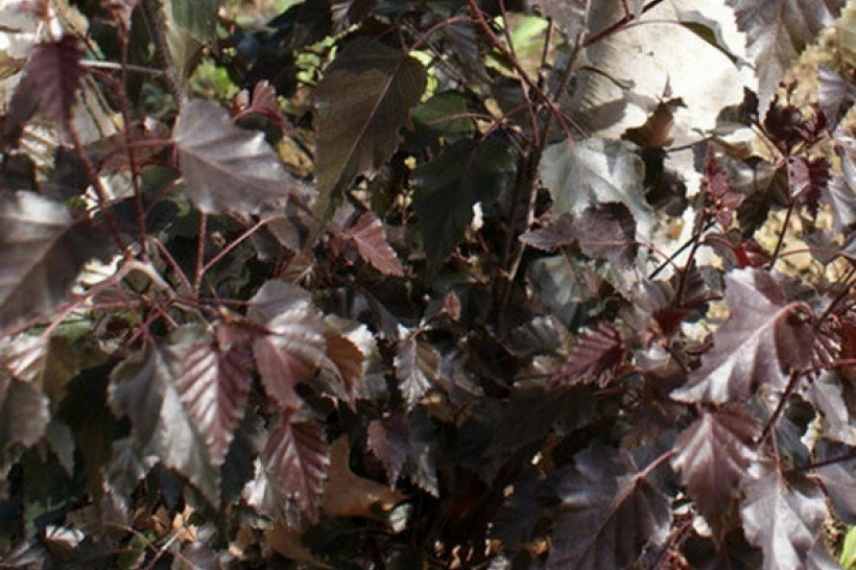
Purple birch ‘Royal Frost’
- Subscribe!
- Contents
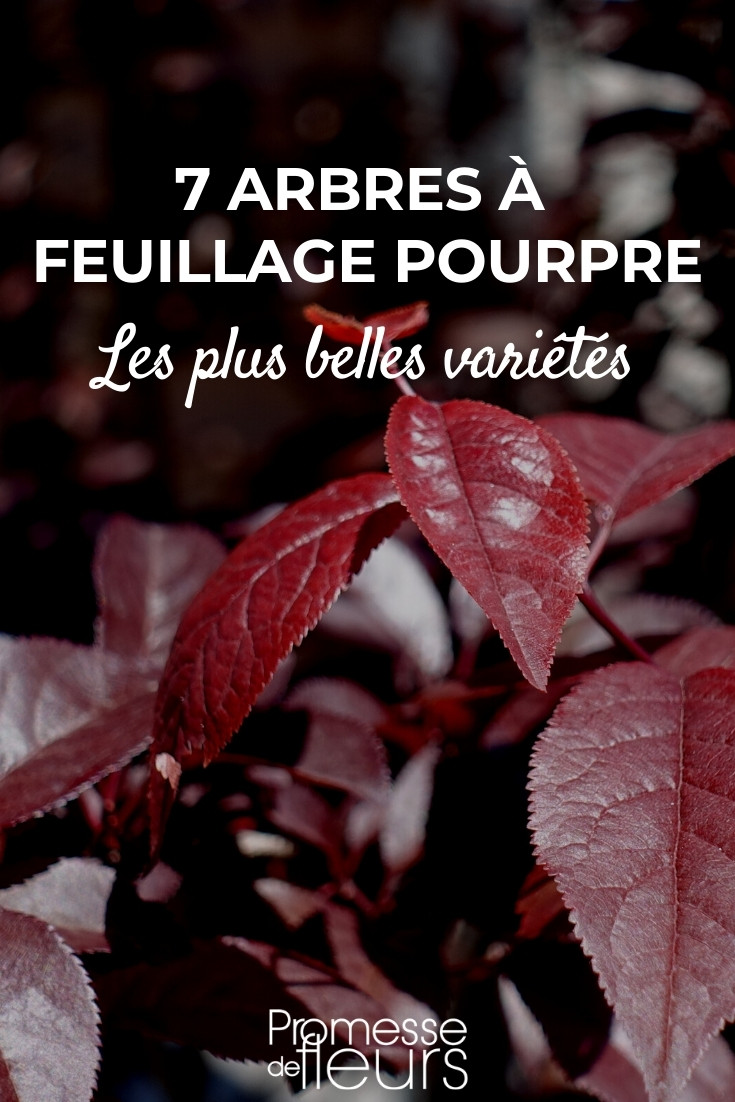































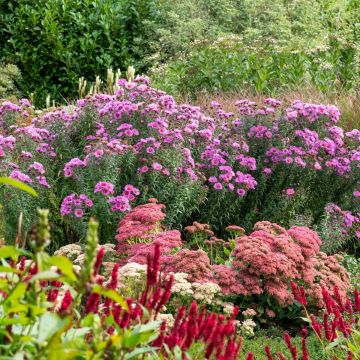
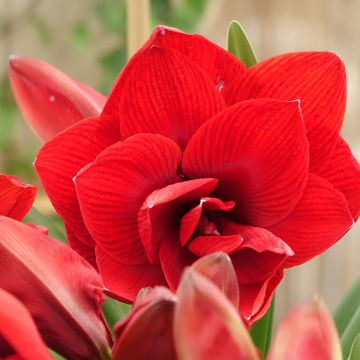


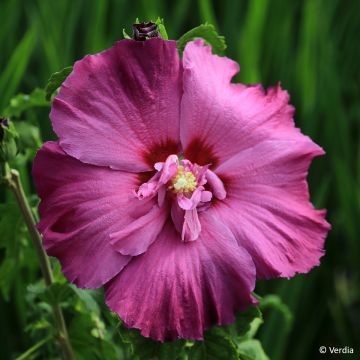
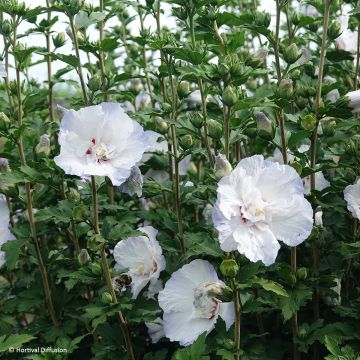
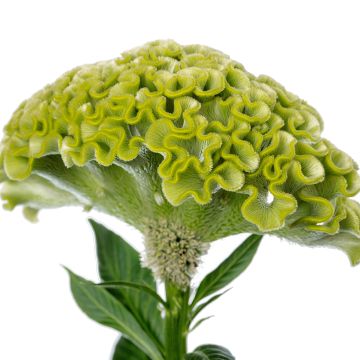
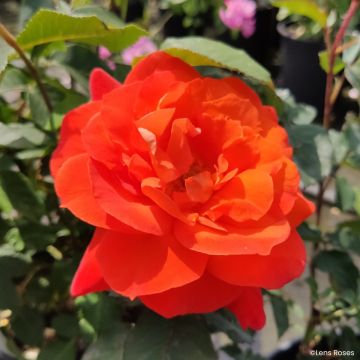
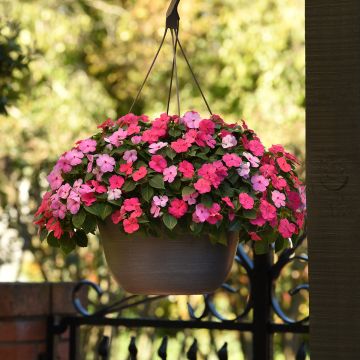
Comments